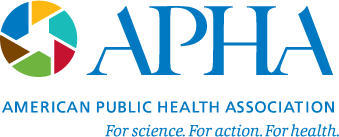310400
Impact of military leadership behaviors on OEF/OIF servicewomen's risk of sexual assault in combat-related and non-deployed settings

Objectives: The aim of this study was to examine the impact of military leadership behaviors on risk of sexual assault (SA) in non-deployed and combat-deployed military environments.
Methods: A Mid-Western cohort of 1339 OEF/OIF era servicewomen participated in this cross-sectional study..
Results: The sample included: currently serving (79%) and Veteran (21%) servicewomen; 4% (lower) enlisted, 66% non-commissioned officers (NCOs) (upper enlisted), and 29% commissioned officers (COs); with 51% deployed in Iraq and/or Afghanistan. Participants were asked 20 NCO and CO leadership behaviors that produced 4 behavior factors: 1)leadership environment (e.g., concern with ethical behavior, support seeking mental health care, zero tolerance for sexual harassment), 2)soldier treatment (e.g., embarrassing soldiers in front of other soldiers; showing favoritism); 3)NCO sexual harassment (e.g., sexually demeaning comments) and 4)CO sexual harassment. SA in military was experienced by 16% of participants, of which 39% acknowledged multiple assaults. Risk factors for SA occurring in non-deployed settings included: Soldier treatment, NCO sexual harassment, and being of NCO rank. Risk factors for SA occurring in a combat-deployed setting included NCO sexual harassment.
Conclusions: Violence toward military women is a serious public health concern. Our findings demonstrate that NCOs may be a vulnerable population and that leadership behaviors have substantial impact on servicewomen’s safety or risk. Identification of risk factors is vital in development of evidence-based interventions and policies that address military conduct.
Learning Areas:
Administration, management, leadershipEnvironmental health sciences
Epidemiology
Occupational health and safety
Other professions or practice related to public health
Social and behavioral sciences
Learning Objectives:
List leadership behaviors associated with OEF/OIF military women's risk of sexual assaulted in combat related and non-deployed settings
Discuss military rank and risk of sexual assault in military environments.
Keyword(s): Sexual Assault, Risk Factors/Assesment
Qualified on the content I am responsible for because: I am qualified because I have conducted research in the area of Veteranís military environments, health risks and health outcomes for approximately the past twenty years and given multiple presentations on such data.
Any relevant financial relationships? No
I agree to comply with the American Public Health Association Conflict of Interest and Commercial Support Guidelines, and to disclose to the participants any off-label or experimental uses of a commercial product or service discussed in my presentation.
